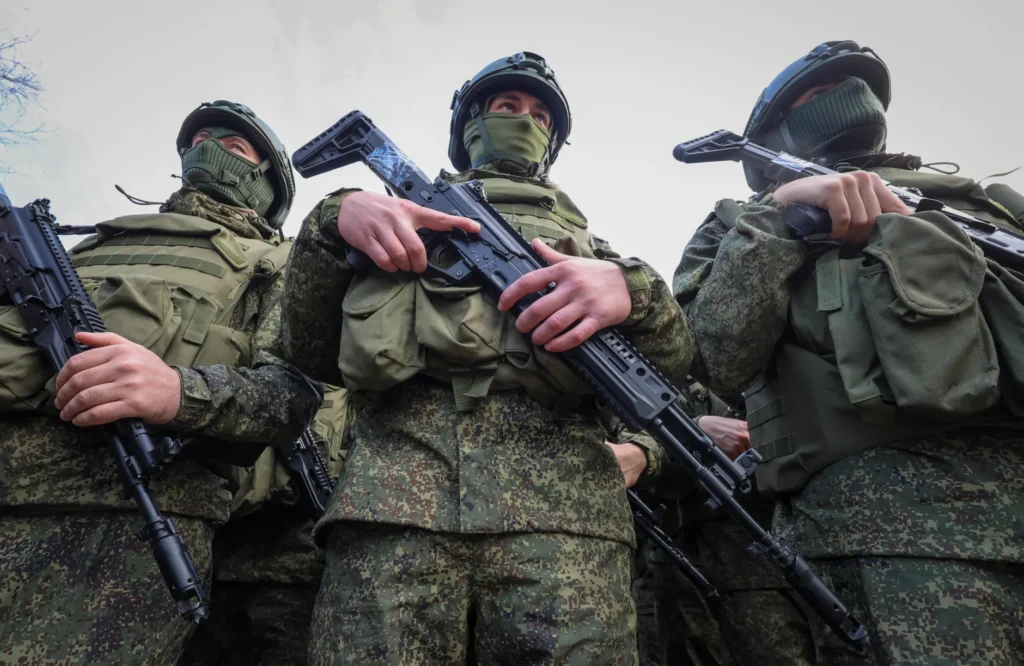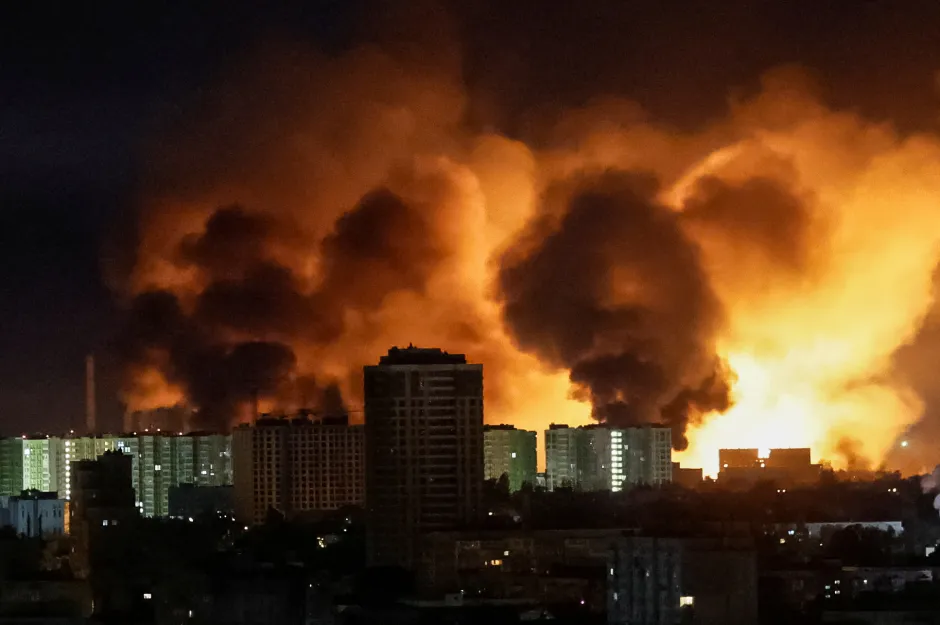KYIV, Ukraine — Russia is reportedly massing a force of 50,000 troops near Ukraine’s northeastern border in preparation for a major summer offensive on Kharkiv, raising fears of a new escalation in the war as Vladimir Putin seeks to seize strategic momentum.

Ukrainian officials and military analysts have confirmed an uptick in Russian movements near Kharkiv, Ukraine’s second-largest city and a symbol of resistance since the initial invasion in 2022. Ukrainian military reports from April signaled that the Kremlin has been steadily repositioning combat units toward the border, with some of Russia’s most battle-hardened soldiers potentially involved in the impending operation.
The “fortress city” of Kharkiv, as many have dubbed it, was instrumental in resisting Russia’s early push into eastern Ukraine. Now, intelligence suggests it could become the focal point of Russia’s 2025 summer offensive, which analysts believe is timed within a critical four-month window for Moscow to make territorial gains.
Speaking to Sky News, military analyst Professor Michael Clarke said the massing of elite Russian troops near the region—some of whom participated in successful operations around Kursk, previously recaptured by Ukraine—signals the possibility of a renewed spearhead offensive.
“If they’ve left those units there, that would suggest they want them to spearhead something else,” Clarke said.
According to Dr. Jack Watling of the UK’s Royal United Services Institute (RUSI), Russia is unlikely to launch a large-scale, fast-moving campaign due to depleted mechanized forces. Instead, Watling foresees a “soft launch” strategy, involving a gradual escalation of localized assaults along a widening front—something already visible in recent skirmishes and attempted advances around the Sumy region.
“The Russians lack the force quality to operate in rapid, large maneuvers,” Watling said. “Instead, we’re seeing a steady increase in the number and scale of assaults. Indeed, this process has already begun.”
Despite the apparent push for escalation, experts caution that Russia’s capacity for sustained operations is rapidly declining, with Soviet-era stockpiles dwindling and production of new equipment struggling to meet front-line demands.
Clarke emphasized that Russia faces a logistical ceiling by autumn. “I think they must know this is their last year of build-up before they plateau on tank production,” he said.
Russia’s short-term advantage may also be aided by shifting diplomatic conditions. The United States has reportedly stepped back from direct peace negotiations, and while Putin has proposed talks, he failed to appear at a planned summit in Istanbul with Ukrainian President Volodymyr Zelensky. The only agreement reached in recent weeks has been a symbolic prisoner exchange, involving 1,000 captives from each side.

Despite the diplomatic stagnation, Putin’s maximalist demands and declarations that his forces can “fight for years” have dimmed hopes for a breakthrough. Meanwhile, Kremlin spokesperson Dmitry Peskov confirmed no new peace talks are scheduled, and European leaders—including UK Prime Minister Sir Keir Starmer—have accused Putin of deliberately stalling efforts.
The renewed military threat comes amid a dramatic escalation in Russian aerial attacks, with Moscow unleashing the largest air assault of the war in the last 48 hours. NATO forces scrambled fighter jets in response to a wave of 367 drones and missiles, according to Ukrainian Air Force spokesman Yuriy Ihnat.
Among the munitions deployed were 69 ballistic and cruise missiles and 298 drones, including Iranian-designed Shahed UAVs. The overnight barrage rocked Kyiv, forcing residents to seek shelter as 250 drones and 14 Iskander-M ballistic missiles rained down, igniting apartment blocks and shaking the capital in a seven-hour siege.
Ukraine’s 13th National Guard Khartiia Brigade reported that Russian troops are now repositioning closer to combat lines, preparing for what may become a broader, high-intensity campaign in eastern Ukraine.
Putin’s determination to pursue the war, despite growing economic and logistical pressures, indicates a belief that further gains in Ukraine could improve his leverage in any eventual settlement—especially now, as international focus and Western backing fluctuate.



